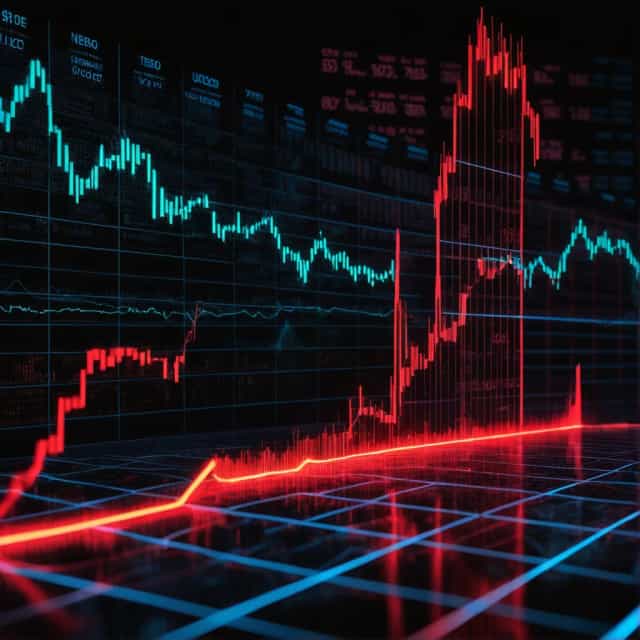
Image source: Block Media
Wall Street Analyst Warns AI-Fueled Market Rally Reflects Conditions Similar to the Pre-1929 Crash
As Wall Street revels in the soaring enthusiasm around artificial intelligence (AI) innovations, an ominous warning has been issued by Andrew Ross Sorkin, renowned financial journalist and co-host of CNBC’s Squawk Box. He has drawn parallels between the current market environment and the speculative frenzy preceding the 1929 Great Depression, cautioning that today’s market dynamics may signal a looming financial collapse.
In his new book, 1929: Inside the Greatest Crash in Wall Street History – and How It Shattered a Nation, set for release on October 14, Sorkin challenges the notion that the AI-driven market surge accurately reflects the strength of the real economy. Speaking to CBS on October 13, he remarked, “The market is overheated, and a collapse is inevitable at some point. While the timing and severity are uncertain, the certainty of a downturn is undeniable.”
Echoes of the Roaring Twenties: Are We Repeating History?
Sorkin compares the current financial landscape to the “Roaring Twenties,” a period marked by immense economic expansion and unchecked speculative excess. Despite record-breaking stock market highs today, he warns of underlying market fragility akin to the unstable foundations of the 1920s boom.
Historically, the late 1920s witnessed individual investors leveraging significant debt to purchase stocks, taking advantage of margin trading. While this strategy created substantial gains during bullish markets, it led to devastating losses during downturns. Sorkin argues that AI hype serves as the modern equivalent of speculative instruments. “The question remains—can the massive investments pouring into AI truly generate tangible profits?” he asked, emphasizing the risk of underestimating the gap between market optimism and fundamental value.
Weakening Financial Protections and Regulatory Oversight
An additional concern highlighted by Sorkin is the erosion of regulatory frameworks designed to safeguard investors post-Great Depression. “The protective mechanisms established to stabilize financial markets are being progressively dismantled,” he explained. He pointed to the Securities and Exchange Commission (SEC) as a prime example, noting loosened oversight and diminished authority to enforce critical safeguards.
The introduction of proposals aimed at providing retail investors broader access to private investment markets has deepened these concerns. Although marketed as a step toward “financial democracy,” Sorkin warns that such measures could compromise investor protections. “Opening private high-risk markets to everyday investors could spell trouble,” he noted.
BlackRock CEO Larry Fink has advocated for allowing alternative high-risk investments, such as AI startups or data centers, to become part of 401(k) retirement portfolios. While Fink emphasized that risk is inherent to any investment, he suggested cryptocurrencies—comparing them to gold—could be leveraged as diversification tools.
Cryptocurrencies: Inflating a New Bubble?
Sorkin also raised concerns that speculative behavior in certain cryptocurrencies resembles the volatility witnessed in the 1929 market. Assets like meme coins, which often lack significant intrinsic value, have swung dramatically between meteoric rises and catastrophic crashes.
In illustrating such speculative fervor, Sorkin shared a personal anecdote from his television appearance where he humorously quipped about launching a “Sorkin Coin.” Surprisingly, an actual Sorkin Coin was created, and its daily trading volume skyrocketed to $170 million—only to plummet to $20 shortly thereafter.
“Speculative investments, excessive leverage, and weaker regulations are converging in troubling ways,” Sorkin observed. “Although short-term market booms may appear thrilling, as investors, we cannot afford complacency. It’s critical to mitigate systemic risks before they compound.”
A Cautionary Warning for Investors in the AI Boom
Sorkin’s observations serve as a sober reminder that the AI-driven rally sweeping Wall Street may be masking deeper market vulnerabilities. At a time of soaring optimism, he urges investors to tread carefully, focusing on structural risks rather than being lured solely by short-term exhilaration.
While the promise of AI is reshaping industries and economies, its burgeoning influence in markets mirrors historical patterns of speculative excess—patterns that have, time and again, led to catastrophic consequences. For today’s investors, the lessons of 1929 remain more relevant than ever.










